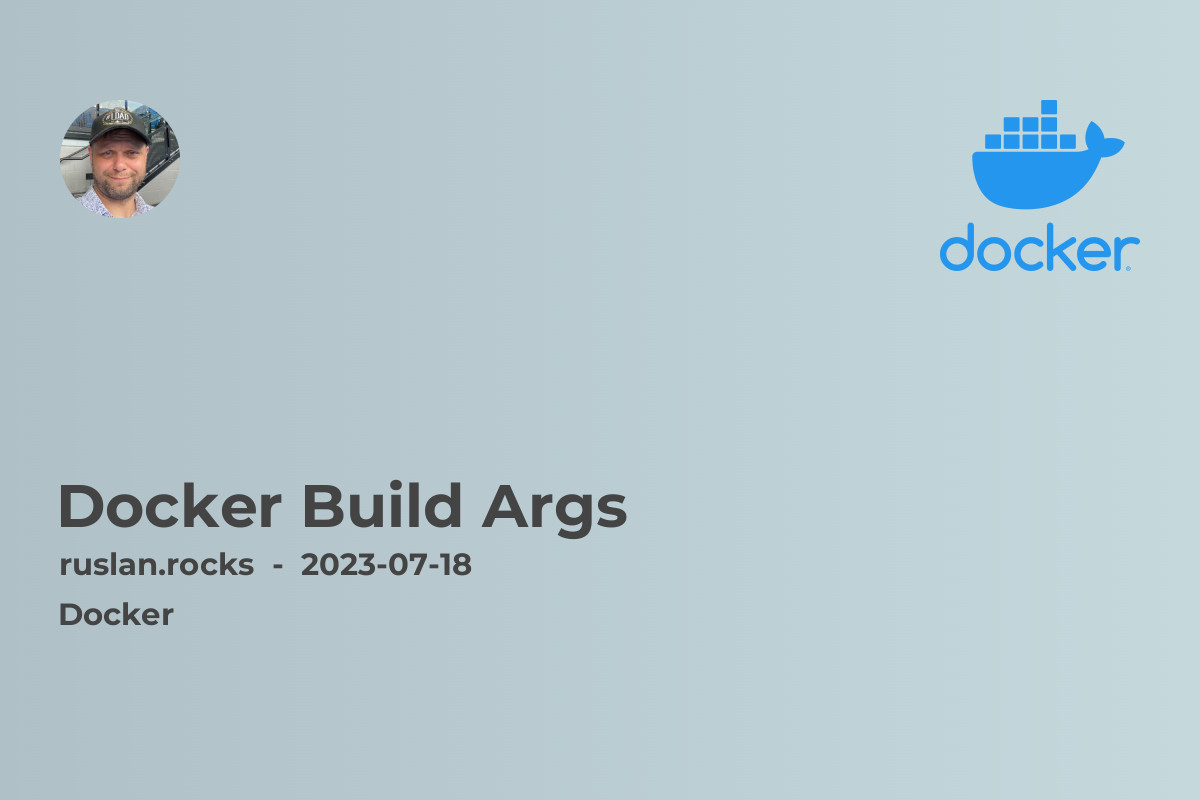- What Are Docker Build Args?
- Using Docker Build Args in Practice
- Benefits of Using Docker Build Args
- Related Articles

Docker is a popular containerization platform that allows users to package their applications and dependencies into portable containers. One of the key features of Docker is the ability to customize and configure the container images using build arguments, also known as Docker build args. In this article, we will explore what Docker build args are and how they can simplify the customization of container images.
What Are Docker Build Args?
Docker build args are key-value pairs that can be passed to the docker build command during the image build process. They allow users to dynamically set environment variables in the Dockerfile, which can then be used during the build process. Build args are specified in the Dockerfile using the ARG instruction, and their values can be set at build time using the --build-arg flag when running the docker build command.
Docker build args provide a way to parameterize the image build process and make it more flexible. They can be used to change the behavior of the Dockerfile based on the specific requirements of each build, without modifying the Dockerfile itself. This makes it easier to maintain and reuse Dockerfiles across different environments.
Using Docker Build Args in Practice
To use Docker build args in a Dockerfile, you first need to define them using the ARG instruction. For example, let's say you want to pass a version number to the Dockerfile at build time:
ARG VERSION
RUN echo "Building version $VERSION"
When building the image, you can set the value of the VERSION build arg using the --build-arg flag:
docker build --build-arg VERSION=1.0 .
The value of the build arg can then be accessed in the Dockerfile using the $VERSION syntax.
Benefits of Using Docker Build Args
Using Docker build args can bring several benefits to your container image customization process:
-
Flexibility: Build args allow you to inject dynamic parameters into the build process, making it easier to customize the image based on different requirements. This enables you to create more flexible and reusable Dockerfiles.
-
Modularity: By separating environment-specific configurations from the Dockerfile, you can avoid duplicating or modifying the Dockerfile for each environment. Instead, you can pass the necessary configurations as build args, keeping the Dockerfile clean and focused on the core functionality of the image.
-
Reproducibility: Build args make it easier to reproduce the same image with different configurations. By simply changing the values of the build args, you can build multiple versions of the same image without modifying the Dockerfile. This simplifies testing and deployment processes.
-
Security: Build args provide a way to keep sensitive information, such as passwords or API keys, out of the Dockerfile. By passing them as build args, you can keep them separate from the Dockerfile and avoid exposing them inadvertently.
By leveraging Docker build args, you can streamline your container image customization process and make it more adaptable to different environments and use cases.
Related Articles
To further explore the capabilities of Docker and related topics, check out these related articles:
- Dockerfile Copy: Simplifying Container Image Creation
- Docker Build: Simplifying Container Deployment
- Dockerfile Arg: Customizing Container Image Builds
- Environment Variables Docker Compose: Simplifying Container Deployment
- Docker Security Best Practices: Ensuring Container Security
These articles provide valuable insights into different aspects of Docker and containerization, helping you deepen your knowledge and enhance your container management skills.
In conclusion, Docker build args are a powerful feature that simplifies the customization of container images. By using build args, you can make your Dockerfiles more flexible, modular, reproducible, and secure. Embrace the power of Docker build args to streamline your container image customization process and unlock the full potential of Docker.
